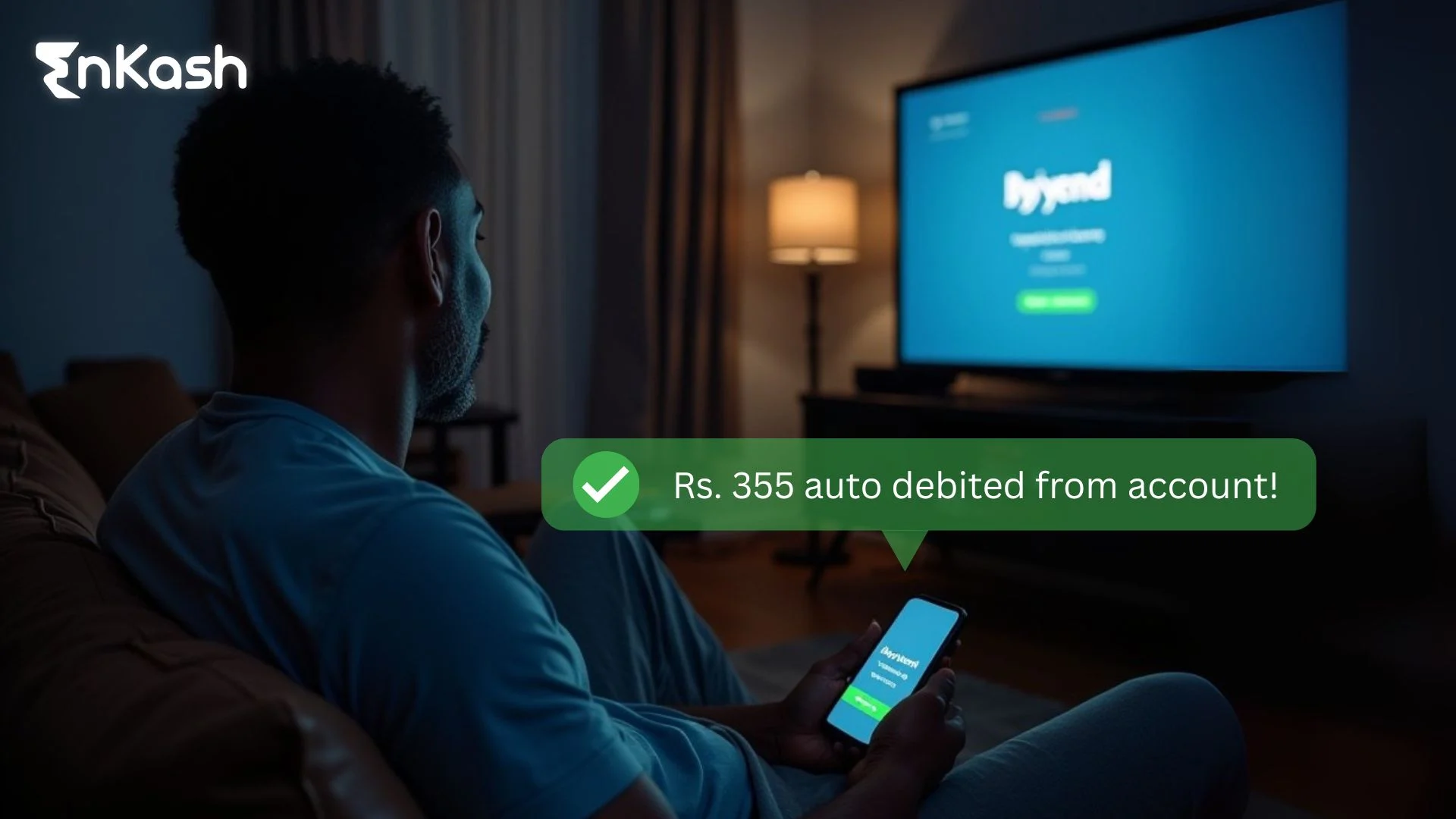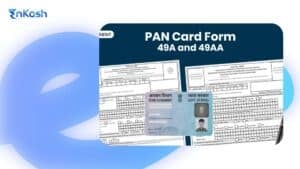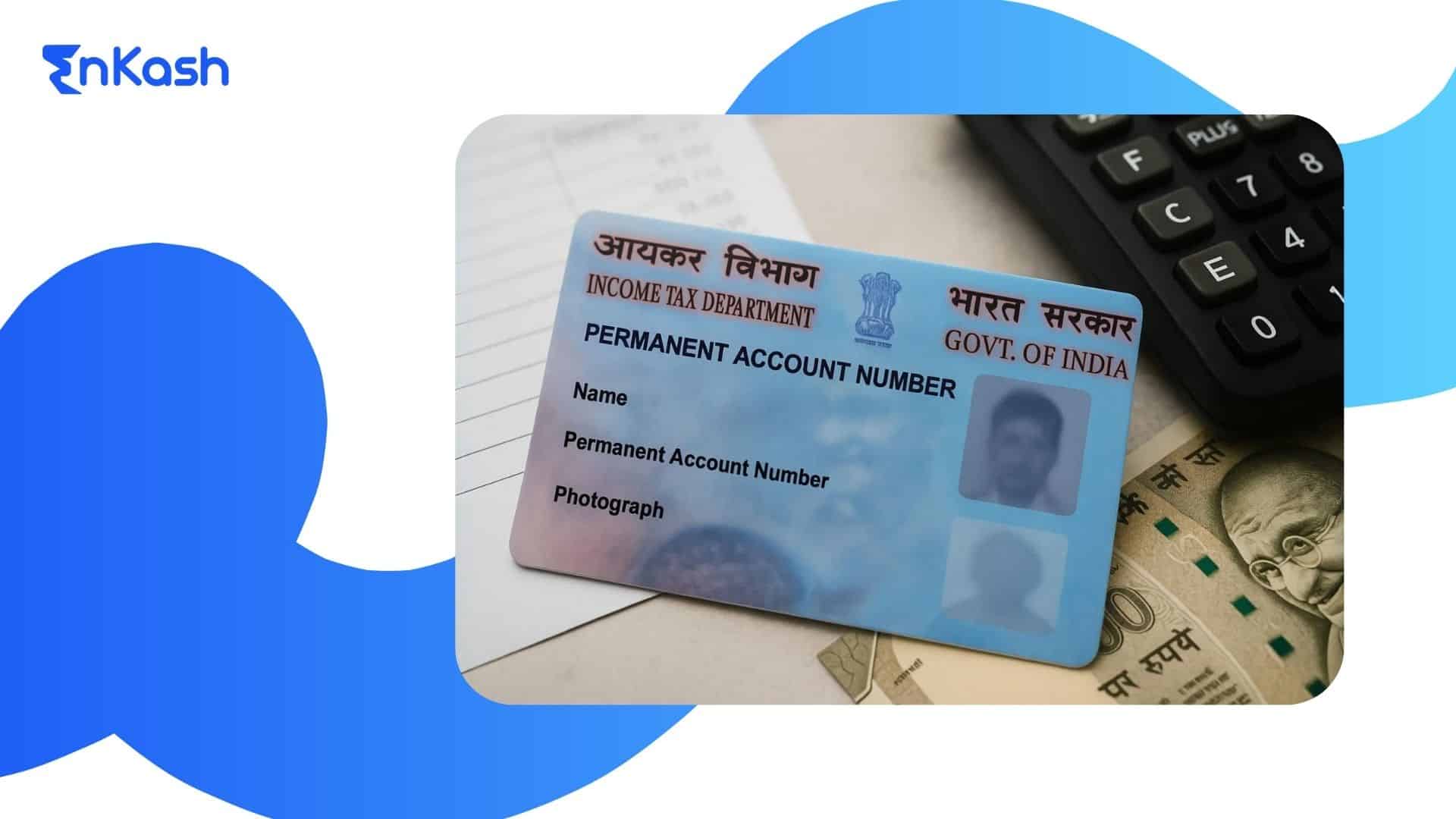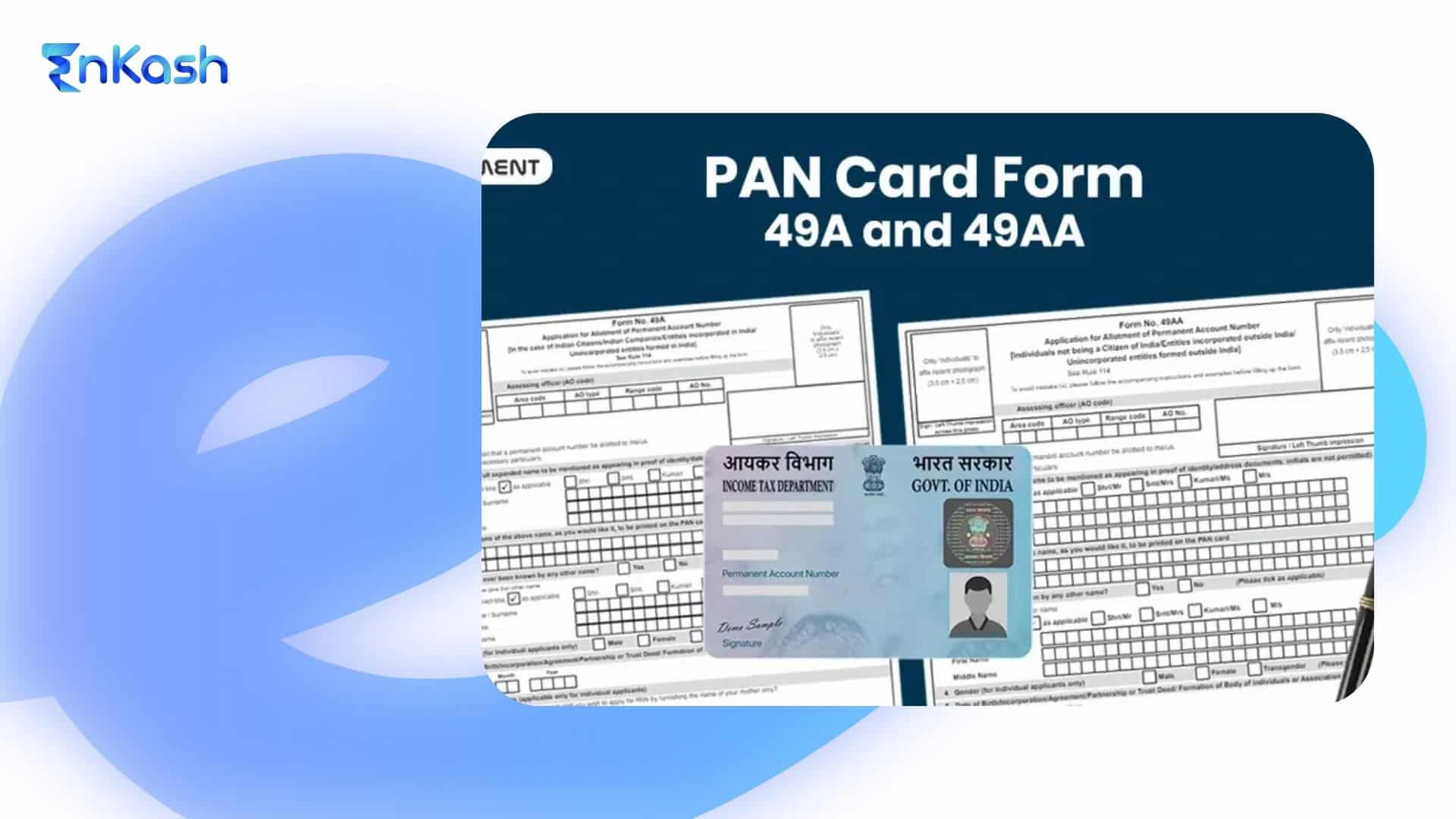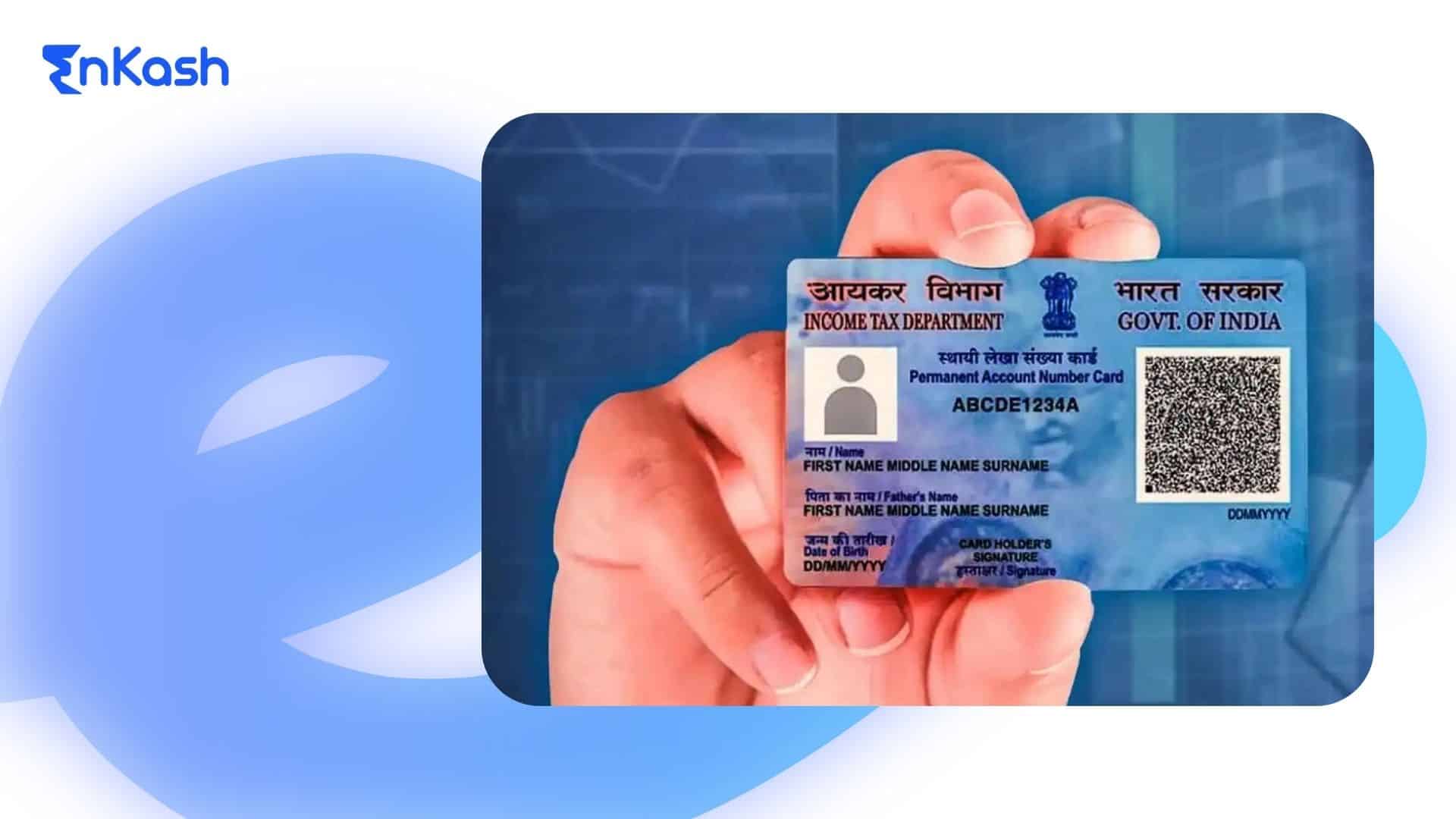Introduction
In today’s fast-paced digital economy, auto debit is a preferred method for managing payments. Whether it’s for credit card bills, EMIs, subscriptions, or utility bills, users choose automatic deductions to save time and avoid late-payment charges. But how does it work? What all do you need to know before setting it up? Let us explore everything about an auto debit, from its meaning and setup to its advantages, disadvantages, and the smart ways to handle it.
Why Everyone Is Now Opting for Auto Debit
In today’s fast-moving digital world, no one wants to miss a payment. That’s why auto debit is used—it’s quick, reliable, and has no manual work once fixed. More and more users are buying into the concept for everything from EMIs to subscriptions.
Simplifies Recurring Payments
Auto Debit simplifies the modern financial life by automating payments for loans, insurance, OTT subscriptions, and electricity bills. It requires a one-time activation, eliminating the need for manual transactions. Whether you have an account in a bank, a credit card, or a UPI app, auto debit takes care of your payments seamlessly in the background.
Avoids Late Payment Penalties
A major point of agony for customers is failing to make it to a cut-off date. Auto debit eliminates that issue. By activating auto-pay or auto-debit through your respective bank or app, you set payments to be executed on time, avoiding any late fees, penalties, or service disruptions.
Integrating with the Digital Banking Lifestyle
Now that digital wallets, UPI, and platforms such as EnKash have gained popularity, setting up an auto debit is as good as just a few taps away. The bank app lets you activate or deactivate payments at your whim. Such a convenience suits the pace of the app-driven lifestyle perfectly.
Preferred by Businesses and Consumers Alike
Auto debit is a win-win for both consumers and businesses. It ensures that payments are made on time, lessens collection costs, and reduces defaults. That is why a company, from telecom operators to SaaS platform providers, would opt to set auto-debit as its default payment option. For consumers, this is fast, secure, and frictionless.
Reduces Mental Load and Stress
Life is demanding, and managing bills shouldn’t add to it. Auto debit eliminates one more task from an already busy schedule. As opposed to setting reminders for payment, checking balances, and manually paying, users now sit, relax, and let the system do it for them. This mentality of freedom is one of the underappreciated benefits of auto debit.
Fosters Timely Financial Habits
On-time payment strengthens the credit profile. Auto debit helps you maintain such consistency on autopilot without remembering a single due date. Gradually, it helps with good credit scores, loan approvals, and financial discipline.
Saves Time and Boosts Efficiency
Auto debit, while less visible, saves your precious time that would otherwise be spent on logging in, entering OTPs, and manual processing of payments. In case you have one or ten recurring bills, you can assure yourself that you are never late on payments; hence, free to spend on things that matter to you more.
Behind the Scenes of Auto Debit
Ever wondered what happens after you click the infamous “set auto pay” option? Auto debit silently works in the background-deducting payments timely without bothering you with reminders, using standing instructions, cards, or UPI mandates- how convenient!
Automated Payment Scheduling
What is an automatic debit? From a technical perspective, it is a mechanism that deducts money from your bank or credit card account at predetermined frequencies, be it daily, weekly, or monthly. This setup allows payments to be made automatically without human intervention, thereby easing a lot in saving one’s monetary affairs.
Based on Standing Instructions
This boils down to one thing: permission. You grant your bank or an app standing instructions to pay on your behalf. Once this permission has been granted, payments are deducted on agreed terms without needing further authorization.
Initiated by Your Consent
Auto-debiting is a high-standard process with security steps implemented at every stage. No payment is processed until the explicit permission is given by the customer, facilitated through an OTP, UPI PIN, or digital signature at the setup stage. Payments are automatic following this, thus remaining within one’s control.
No Action Needed for Each Transaction
Once auto debit is activated, transactions are executed as per schedule. Tracing due dates or undergoing a log-in procedure involving several steps every month is never necessary. Once working, the system sees to it that the invoice generation and the actual debit and credit are done.
Handles Multiple Payment Types
UPI auto debit mode is usually used for monthly subscriptions such as Netflix and Spotify. Auto pay cards, on the other hand, cover everything from EMIs to insurance payments. This makes the method highly versatile, allowing users to pay different bills in one smart way.
Not Enough Balance? It May Fail
Like any automated system, auto debit has its limitations. If you do not maintain enough minimum balance in your account to cater to that auto-debit, the transaction would fail. And, more often than not, this would invite service disruption or return charges from your bank for auto-debit. Maintenance of balance is crucial, hence.
Gives Timely Alerts
Auto debit doesn’t mean you are left in the dark. Most platforms send SMS or in-app notifications before and after every transaction. These alerts give you time to confirm if you have enough balance, cancel if necessary, or switch from one payment method to the other, thus enabling you to exercise your control over it.
Setting Up Auto Debit in Just a Few Steps
Setting up auto debit is way easier than manually paying any bill. In the banks, apps, or the UPI platforms a couple of clicks and a few seconds of pressing okay will do. Go through this quick reading to activate it without any hitch.
Log In to Your Preferred Platform
To begin the setup of auto debit, log into your banking app, mobile wallet, or some digital platform like Google Pay. They provide a straightforward user interface to help you easily navigate through the different steps and set up recurring payments.
Choose the Biller or Merchant
Once logged in, select the merchant or biller where you want to make auto debit payment selections. This could be a telecom operator, a utility company, OTT subscription providers, insurance providers, or an EMI provider.
Enable the Auto Debit Payment Option
This step involves setting up and enabling auto-debit. Depending on the bank or app on which it is used, the option may be named differently. Once chosen, the setup requests your authorization to deduct payments on a recurring basis.
Select the Account or Card for Payment
Confirm your payment method: bank account or an auto-pay card (credit or debit). Do ensure that enough balance is available during cycles for payment to avoid auto debit return fees or failures.
Set the Frequency and the Payment Date
Set your preferences in terms of payment date and frequency-monthly, bi-monthly, or quarterly, thereby rendering the process a highly customized experience depending on your billing cycle and convenience.
Authenticate as per RBI Guidelines
According to the guidelines of the Reserve Bank of India, banks and apps ought to obtain consent from their customers. You receive an OTP, or you may authenticate via Biometrics/PIN instead, to confirm the setup. This step ensures that only an authorized user can enable recurring deductions.
Get Confirmation and Notifications
Once the user has successfully authenticated, there comes a confirmation of that. Most platforms also notify users a few days before the auto debit transaction is due.
Modify or Cancel at Any Time with Ease
If you want to change the date of payment, switch accounts, or cancel an auto debit, most platforms allow your users to quickly update or cancel it from their dashboard. This flexibility makes working with ever-changing needs easy.
Using Auto Debit Through UPI or Cards: What Is Best for You?
Both UPI and card-based auto debit offer seamless options to make payments, whilst being slightly different in speed, limits, and control. In such cases, one may fit your needs better than the other. Let’s compare them with how each works.
UPI Auto Debit for Day-to-Day Subscriptions
UPI auto debit is considered perfect for small-value payments like OTT platforms (Netflix, Hotstar), music apps (Spotify), or utility bills. Apps like Google Pay, PhonePe, and Paytm provide this feature quite easily. Users would mark recurring mandates to specific merchants, so small-value payments are handled smoothly and automatically.
Card-Based Auto Debit for Larger Transactions
Auto-pay is, in essence, a recurring payment card system, and it is heavily involved with high-ticket payments like e-commerce EMIs, credit card dues, or annual insurance premiums. These platforms ensure recurring billing and thus are suited for structured financial plans.
Difference in Transaction Limits between UPI and Cards
Typically, UPI auto debit supports payments up to ₹15,000 per transaction without extra authentication. Thereafter, card-based auto debit will have the preferred schemes since it offers greater transaction limits, especially for EMIs and long-term services.
Security and Alerts for Both Methods
These methods, UPI or card-based auto debit, employ secure authentication under the aegis of the RBI. Alert messages reach users before deductions take place, empowering them to cancel or alter if guilty of any infraction. Such transparency gives control over personal finances.
Flexibility Based on Your Needs
For payments mostly placed below ₹10,000, such as subscriptions, smaller utility bills, or recharges on mobiles, UPI auto debit would be more comfortable and quicker to implement. Managing a handful of EMIs or credit card bills would go a long way with auto-debit through cards towards providing more structure and control.
Integration with Digital Platforms
EnKash and similar digital platforms allow the UPI-based as well as mandate on the card. Having these options integrated under one umbrella makes it easy for users to compare, manage, and choose whichever method serves their purpose best.
Ease and Cost should be considered.
Most of its charge no fees; however, any non-sufficient fund failure in execution might attract an auto-debit return fee, especially with card-based services. Hence, the choice of one method over another can have these penalty charges removed.
Final Selection Depends on Your Lifestyle
UPI auto debit and auto pay cards serve different purposes. Consider your monthly applications of payments and your comfort with the platforms, as well as the number of transactions in terms of choosing either. So, ultimately, they are all good avenues to make life easier with timely automated payments.
What to Do When Auto Debit Fails or Returns
It is not entirely flawless—you can have failed instances for a low balance, expired card, or technical glitch. When that happens, the quicker you act, the fewer return charges you have to pay and the fewer inconveniences you face.
Understand the Reasons for Auto Debit Failure
These transactions may fail due to a variety of reasons, including the most common cited insufficient balance in the associated bank account or on the card. In such cases, the transaction never gets processed, and the payment remains unpaid until manual intervention.
Chargeable Return Fees in Case of Auto Debit Erroneous Payments
Most banks and payment platforms charge a fee for the dishonored automatic debit payment. The amount varies depending on the institution and on the type of payment in case of dishonor fees. Such fees are sensitive when it comes to the payment of loan EMIs, insurance premiums, and credit card bills.
Expect Consequences of Late Payments
Late fees or service suspensions can occur because of payment failure, even though it is done through automatic debit. For example, if your EMI or utility payment goes through by way of auto debit/succeeds using it, or is just a manual one-time payment and fails, you are supposed to suffer late interest charges or disconnection of the services. It is crucial to keep in mind such consequences to prevent dirt on your financial record.
Watch for Notifications from Your Bank or App
Banks and UPI applications customarily promptly alert the customer when it fails. These notifications help you respond quickly, be it by depositing funds or making a manual payment. If you ignore the notifications, it might get repeated and lead to penalties.
Monitor Your Payment History Regularly.
Be proactive by constantly checking out your transaction history in your banking or payment app. Search for the scheduled auto pay mandates queued, then scrutinize which ones are presently active. This helps ensure that you know what’s due and at what time, thus preventing its failures.
Keep Your Account Funded Before Due Dates
Know that generally, a failed transaction has an amount that is not balanced in the account. So, to be safe, keep this minimum amount in your account at least a day before the scheduled deduction. This is quite effective for an auto debit in UPI payments or credit card-linked payments, suggesting that any insufficient amount may get rejected instantly.
Reschedule Payments If Required
If there are chances that you might run into an argument about an insufficient balance, then you may probably reschedule the it because there is a facility option available on some platforms. This reschedule would help you adjust the date of the auto debit payment with enough time for funds to be credited to your account or card.
Avoid Repeated Failures to Maintain Credit Score
Repeated failures for auto-pay of loan EMIs will adversely affect your credit score. Timely payments are very important to maintain a healthy financial record and especially when auto debit for EMIs or credit card dues has been set up.
How to Stop or Cancel an Auto Debit Easily
Need to pause or cancel it? Perhaps you are switching services or simply want to claw back some control. Consider it done! Here’s how you can get it managed or canceled with as little pain as possible.
Access the Auto Debit Management Section
Nearly all banks and UPI apps will have a section called “Manage Auto Debit,” “Recurring Payments,” or “Standing Instructions.” All your active mandates are listed here. This is where you want to begin the cancellation process.
Select the Auto Debit Mandate to Cancel
In the management section, select the specific mandate you want to stop. For each active mandate, whether for subscription, loans, or bill payments, you will get details on when it started, its frequency, and the next date of payment.
Initiate Auto Debit Cancellation from Dashboard
Click the cancel or deactivate option for that mandate. The interface will generally have a button to either Cancel Mandate, Stop it, or Turn Off Auto Pay. This puts in motion the cancellation of that particular instruction.
Authenticate the Cancellation Using OTP
For security reasons, banks or apps will require you to get an OTP verification. This additional layer of authentication ensures that the request is from the rightful user. Enter the OTP sent to your registered mobile number.
Confirm that Auto Debit Is Deactivated
Once OTP verification is successful, the screen will display a confirmation message or will be sent through SMS/email. Make sure to save it or screenshot it for future reference to prove that the cancellation was successfully submitted.
Easily Stop Auto Debit on UPI Apps
If you use any UPI apps like Google Pay, PhonePe, or Paytm, it can be canceled using the app itself. You are taken to the Mandates section under it, and you select the ones you want to stop. The process is simple and user-friendly. Generally takes less than a minute.
Cancellation Must be Done at Least 24 Hours Before the Due Date
Possible unwanted transactions can be avoided by canceling the auto debit 24 hours before the next scheduled deduction. This allows ample time for the system to record the cancellation before initiating the payment.
See If the Merchant Also Needs Notification
There might be cases where the merchant may need to be given notice after cancellation, especially with third-party subscriptions. This would prevent them from delivering the service or claiming payment in any way.
Keep Track of Inactive Mandates
Once your mandate is canceled, check the “inactive” section of your app or bank dashboard. This would eventually confirm that payments will not be deducted in the future under such a mandate, and consequently, your preferences for auto debit have been updated all the way!
Auto Debit Benefits and Risks You Should Know
It saves time and builds good financial habits—but it’s not without risks. Here are the pros and cons for you to consider.
Benefits
Saves Time with Hassle-Free Payments
One of the biggest benefits of auto debit is the convenience it brings. You don’t need to remember multiple due dates or log in to different apps each month. Auto debit payment ensures everything from electricity bills to EMIs is handled automatically.
Helps You Avoid Late Fees and Penalties
With auto pay or auto debit enabled, your bills are paid on time, every time. This means no more late fees, no service interruptions, and better financial planning. Whether it’s a monthly subscription or a recurring insurance premium, payments are never missed.
Improves Credit Score Through Timely Payments
If you’ve set up auto debit for credit card payments or loan EMIs, consistent on-time payments can improve your credit score. Lenders and credit bureaus favor punctual payment behavior, and auto debit helps you maintain that track record.
Better Financial Discipline
It encourages better budgeting. Since payments are deducted automatically, you learn to keep your account funded and track your cash flow. It helps avoid impulse spending, especially when you know essential bills are due.
Minimizes Manual Errors and Stress
By handling payments manually, many little errors crop up; for instance, one might enter the wrong amount or set down an incorrect date. Now, with auto debit, all these input errors are eliminated, thus making cash management a less stressful, more elegant process.
Risks and prevention
With certain advantages, the system does raise some risks. If a bank account’s balance is insufficient, the payment stands to fail, and in the treatment of the account returns, these return fees are levied on the customer. This has implications for the credit rating of the customer, especially if the payment relates to a loan. The last risk of forgetting mandates is also forgetfulness; staying active in mandates may entail paying for a service that you do not use. Hence, review your auto debit list monthly and cancel any unused subscriptions that are a waste of money. Transactions may also fail because of technical issues. Network error or system downtime may disrupt your scheduled deductions. Always check transaction notifications to confirm successful payments and keep some buffer amounts in your account as a precaution.
Conclusion
It is an efficient way to save time, develop financial discipline, and maintain payments on a schedule. But like any crediting system, responsibilities and risks also come with it. A user is empowered when aware of the setting-up, monitoring, or canceling of the method and can, therefore, benefit from it well while maintaining control. Whether through UPI, cards, or banking apps, understanding the auto debit process enables you to make smarter, safer decisions.

